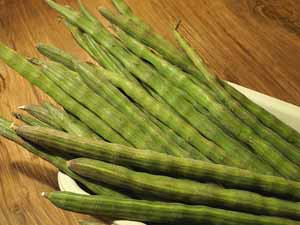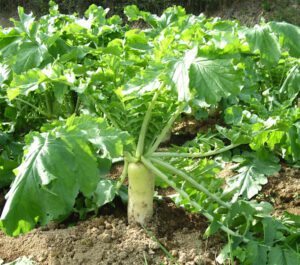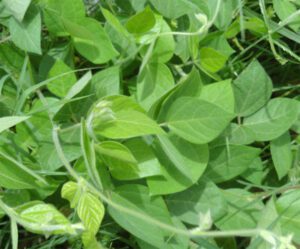Ridge gourd farming is a traditional practice in many countries around the world. It is commercial grown for it’s unripe fruits and used as a vegetable. And the mature fruits are used for their inner sponge for using as cleaning sponges.
Ridge gourd (luffa acutangular) fruit slightly resembles a cucumber or zucchini with ridges. It is native to South Asia and is known by many different local names in many different areas around the world. It’s other names include Dish cloth gourd, ridged gourd, sponge gourd, angled luffa, vegetable gourd, Chinese okra, silk gourd, silky gourd, strainer vine, ribbed loofah etc.
Ridge gourd is mainly used as a vegetable, but it is also grown for it’s inner sponge in some areas. When it is used as a food, it is used as a cooked vegetable or pickled or eaten raw. In some areas, the shoots and flowers are also sometimes used as food.
Ridge gourd has great demand and value in some areas. If you live somewhere where this vegetable has good demand then you can start commercial production. Because, commercial ridge gourd farming is very easy and simple, and very profitable. Here we are trying to describe more information about starting and operating a successful ridge gourd farming business from starting to caring, harvesting and marketing.
What Are The Importance of Ridge Gourd Farming Business?
Commercial ridge gourd farming play a very important role in rural economy. It is a very important agribusiness with several benefits. Here we are trying to list some notable importance of ridge gourd farming business.
- Ridge gourd has good demand and value in the market, and both are increasing gradually in both urban and rural areas.
- Commercial production of ridge gourd can be a lucrative business for making money within a very short period of time. It is a very good way of steady income, especially for small and marginal farmers.
- Ridge gourd is rich in vitamins, minerals and dietary fiber. It is a good source of vitamin C, vitamin A, vitamin B-complex, iron, calcium, magnesium and potassium. So, regular consumption of this fruit contribute to overall good health and wellness.
- Along with being filled with vitamins and minerals, it is very low in calories and fats. So it is an excellent vegetable for weight management and also for health conscious people.
- Ridge gourd plants are very strong and hardy and they can be grown in a variety of soil types and climatic conditions.
- Commercial ridge gourd farming generally require fewer chemical inputs compared to some other crops. So, it can be a part of sustainable farming practice.
- Ridge gourd production helps to better soil health. Because, the deep root system of these plants helps in aerating the soil and enhancing it’s structure.
- As commercial ridge gourd farming is a profitable business, so it can be a great employment source for the rural people (especially educated unemployed young people).

How to Start Ridge Gourd Farming Business?
Starting commercial ridge gourd farming business is very easy and simple. It is similar to starting and operating a sponge gourd farming business. You can easily start and manage this business even if you are a beginner.
Ridge gourd plants are very strong and hardy, and they generally require less caring and other management. Although, we recommend learning more about this business from an existing farmer. Doing this will enhance your experience.
However, here we are going to describe more about this business from land preparation, to caring, harvesting and marketing. Hope this guide will help you.
Step 1: Do Site Selection Wisely
Select a very good location for starting your ridge gourd farming business. You can use your existing land if it is fertile enough and receive full sun. Also ensure good drainage system.
Ridge gourd plants are very strong and hardy and they can thrive and grow well in a wide range of soil types and climatic conditions. But sandy loam fertile soil rich with organic content is considered best for commercial production. Ideal pH value of soil ranges between 5.5 to 6.8.
Step 2: Consider The Climate Requirement
Ridge gourd plants can be grown throughout the year. But humid and warm climate is favorable for better growth of these plants. Optimum temperature for better production is between 25°C and 30°C.
Step 3: Prepare The Land Perfectly
Preparing the land perfectly is very important. You will get maximum production if you can prepare the land perfectly. Plough the land at least for 2-3 times. Then make pit at the spacing of 2.5 x 2 meter distance (45 cm length, width and height).
Try to add as much organic content as you can while preparing the soil. You can use compost or farm yard manure depending upon the availability in your area.
Step 4: Choose the Right Variety
There are many varieties of ridge gourd available. You can choose any variety depending upon it’s availability, demand and value in your local market. You can consult with an expert in your area for having better recommendations regarding selecting varieties.
Step 5: Purchase Seeds
After selecting the right variety for your business, you have to purchase good quality seeds. You can either purchase from your local trusted suppliers or can also consider ordering online. Wherever from you purchase the seeds, ensure that it is of very good quality.
Step 6: Planting
Plant 4-5 seeds per pit at equal distance (thin the seedlings to 2 per pit after 2 weeks). Try to sow the seeds about 1-2 inches deep in the pit. Treat the seeds with Trichoderma viride 4 g or Pseudomonas fluorescens 10 g / kg of seeds before sowing. You will need about 1 kg seed per acre.
Step 7: Caring
The ridge gourd pants are very strong and hardy, and they generally require less caring and other management. Although, taking good care of the plants will ensure good growth and maximum production. Here are some caring tasks you should follow.
- Ridge gourd plants require evenly moist soil to ensure the best and fast growth. So, water your plants on a regular basis, but don’t over water the plants or don’t allow the soil to dry out.
- Ridge gourd is a climbing plant and it require support. You can provide support by using easily available materials (such as rope and bamboo stick).
- Ridge gourd is not a self pollinating plant. So, they many require hand pollination for better fruiting.
- These plants are heavy feeders. So, add adequate amount of vermicompost, compost tea or other organic fertilizers when your ridge gourds start to bloom. Doing this will help to promote greater productivity.
Step 8: Feeding/Fertilizing
Add enough organic fertilizers while preparing the soil. You can also apply some chemical fertilizers for commercial ridge gourd farming. Consult with an expert in your area for having better recommendations.
Step 9: Watering
Adequate watering is a must for getting better production. Water immediately after sowing the seeds. Don’t provide excessive water and don’t let the soil excessively dry.
Step 10: Mulching
Mulching helps to retain moisture into the soil. And at the same time it helps to control weeds. Try to use organic materials as mulch. Although, you can use plastic for large scale production.
Step 11: Weeding
Weeds consume nutrients from the soil and your plants suffer. So, perform regular weeding for better growth of the plants.
Step 12: Pests & Diseases
Like many other commercial crops, the ridge gourd plants are also susceptible to some pests and diseases. Common pests of these plants are Leaf miner, red pumpkin beetle, Aphids, White fly, Thrips, Pumpkin caterpillar, fruit fly etc. And common disease of ridge gourd plants are Powdery mildew, Downy mildew etc. Consult with a local expert for having better recommendation for controlling these pests and diseases.
Step 13: Harvesting
Depending upon the variety, harvest the fruits when they are young. Cut the fruits from the vine with a sharp knife for harvesting.
Step 14: Yield
It’s very tough to tell the exact amount. Because it depends on numerous factors. Generally, you can expect an average production of around 15 tonnes per hectare. And between 35 and 40 tonnes per hectare for hybrid varieties.
Step 15: Marketing
Marketing ridge gourd is very easy and simple. You can easily sell your products in your local market. Although, you should determine your marketing strategies before starting this business.
Frequently Asked Questions (FAQs)
People ask many questions about ridge gourd farming business. Here we are trying to list the most common questions about commercial ridge gourd farming business, and trying to answer them. Hope you will find your answer. Don’t hesitate to ask us if you have more questions.
How long does ridge gourd take to grow?
Depends on the variety. Generally the time from planting to harvesting is between 60 and 75 days from transplants.
What is the yield of ridge gourd per acre?
It’s very tough to tell the exact amount. Because it depends on numerous factors. Generally, you can expect an average production of around 15 tonnes per hectare. And between 35 and 40 tonnes per hectare for hybrid varieties.
What is the crop period of ridge gourd?
January to April for summer crop, and June to July for rainy season crop.
What is the best fertilizer for ridge gourd?
Organic compost or farm yard manure is considered as the best fertilizer for ridge gourd plants.






